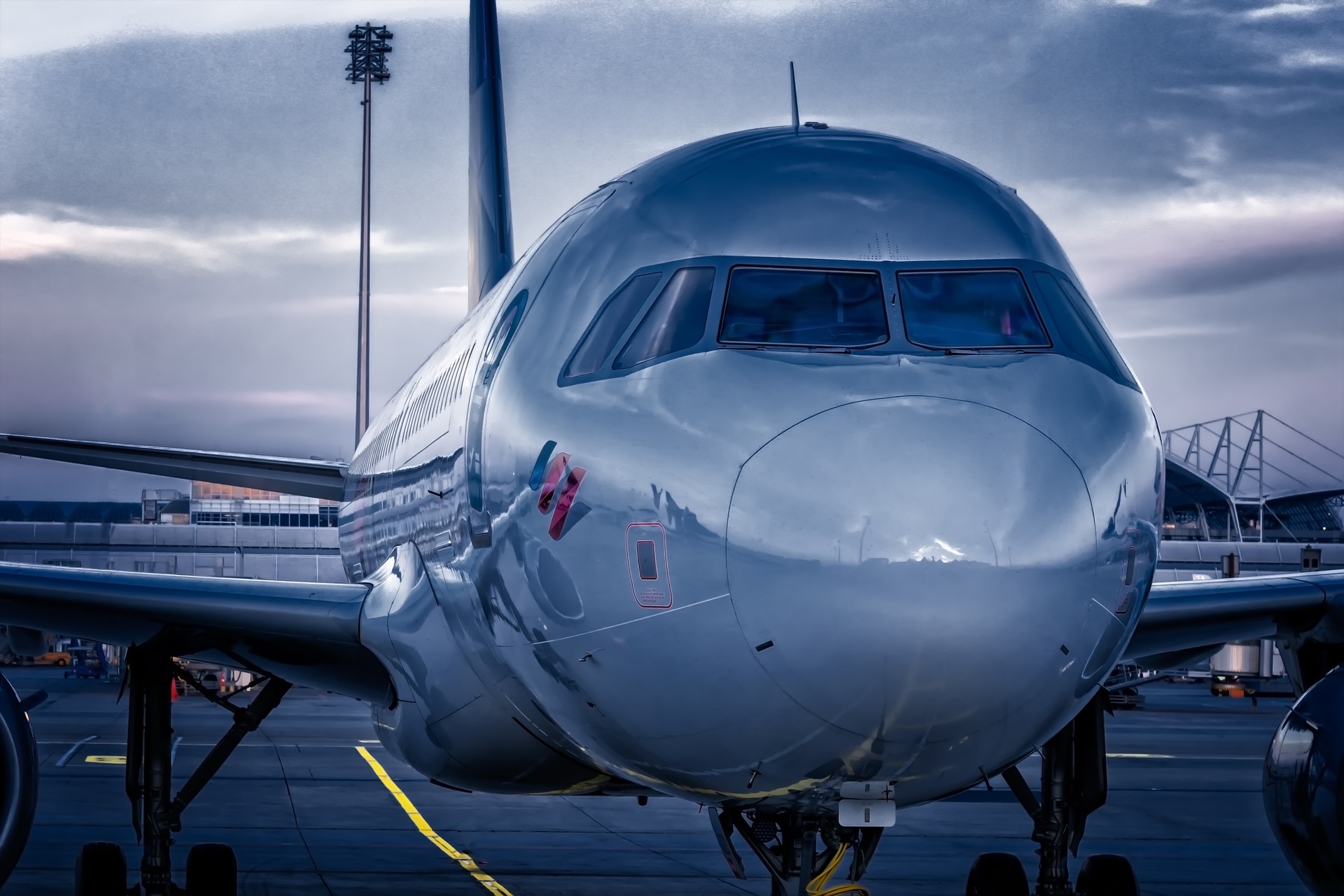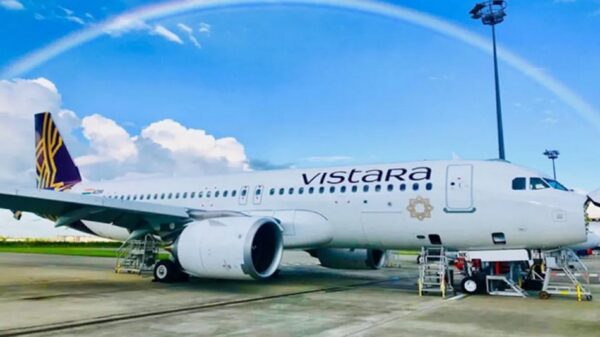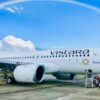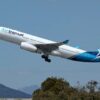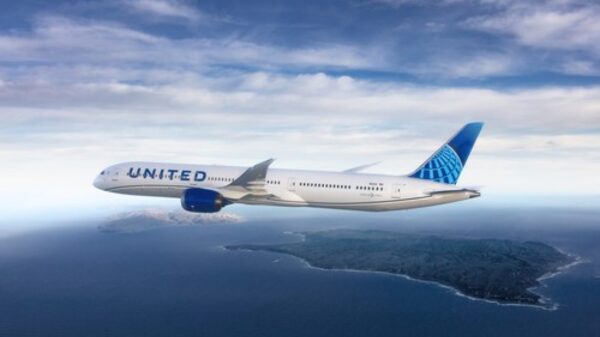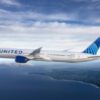The Innovative Engineering Behind the Boeing 787 Dreamliner’s Wings
The 787 Dreamliner, a 30-billion-dollar bet on the airline industry’s future, revolutionised how the industry operates and how future planes are designed and built. By weight, 55% of the 787 is made from composite materials, such as carbon fibre-reinforced plastics. It makes it the first commercial airliner made primarily from this new-age material. The 787 is rivalled only by the Airbus A350XWB, introduced four years after the 787 in 2015.
Composite materials comprise two or more materials, such as carbon-reinforced plastics. Carbon fibre is incredibly strong in tension, up to 5 times stronger than steel and one-fifth of its weight. However, these tiny fibres can’t create a solid part by themselves. To make a substantial part, they must be bonded with a plastic resin to form a solid material. With the right tooling and designers, composite components can be made into almost any shape imaginable.
One disadvantage of making large aircraft components from composites was the time it took to lay up the parts manually. Boeing uses automated tape-laying to produce massive aircraft sections. The 787’s fuselage is created by wrapping a carbon fibre tape impregnated with plastic resin around a rotating fuselage mould. This machine precisely controls the overlaps of the tap and the orientation of the fibres to ensure the best use of the carbon’s tensile strength to resist internal pressure loads and longitudinal bending loads.
The 787’s stronger fuselage provides several benefits for airline operators. It eliminates all joints and fasteners needed to join them, making the fuselage lighter and reducing fuel burn. Additionally, the fuselage is incredibly aerodynamic, with no bumps or ridges on the surface.
Its extremely thin and elegant wings are one of the 787’s most impressive features. The main structural member of a wing is the wing spar, which is designed to resist upward bending forces during flight.
The wings of the Boeing 787 Dreamliner play a crucial role in its exceptional performance and efficiency. This article explores the engineering marvels and cutting-edge materials used in constructing these wings, highlighting their flexibility, aerodynamic features, and safety measures.
Carbon Fibre Composites and Wing Strength
The wing structure of the Boeing 787 Dreamliner is primarily composed of carbon fibre composites, which provide exceptional strength and flexibility. The main load-bearing structure, the wing box, consists of carbon fibre composite wing spars and solid aluminium rib members. The carbon fibre spar offers incredible strength and a higher elastic strain than traditional aircraft aluminium. This quality allows the wings to bend further without permanent deformation, making them super flexible and resilient.
During the flight, the wings of the 787 can flex significantly. It can meet safety standards. The plane is tested to handle 150% of its maximum expected load for a short duration. This rigorous test showcases the remarkable bending capabilities of the carbon fibre composite wings, even though composites are generally stiffer than aluminium. The increased flexibility of the wings enables engineers to design them with a higher aspect ratio, resulting in improved performance.
Aeroelastic Tailoring and Supercritical Aerofoil Design
The 787 Dreamliner’s wings incorporate a concept called aeroelastic tailoring, which allows the wings’ shape to adapt to different flight conditions. This tailoring involves laying the fibres in specific patterns to tailor the stiffness of the wing in other areas. As the aircraft gains speed, the wings’ shape changes accordingly, optimising their aerodynamic efficiency.
To enhance their consistent performance, the wings feature a supercritical aerofoil design. Unlike traditional aerofoils, the supercritical wing has a blunter leading edge, a relatively flat top surface, and a concave curvature on the bottom. Design delays in shock wave formation can reduce lift and increase drag. By increasing the critical Mach number, the 787’s wings minimise wave drag and improve overall efficiency.
Hybrid Laminar Flow Control and Turbulent Flow Reduction
Boeing developed a technology called Hybrid Laminar Flow Control (HLFC) to reduce turbulent flow over the aircraft’s tail. HLFC delays and controls turbulent flow formation, minimising drag and increasing fuel efficiency. The exact details of this technology remain undisclosed due to its competitive advantage.
Turbulent flow, erratic and highly unpredictable air movement, cause increased drag. The 787’s HLFC technology helps maintain laminar flow, where fluid layers move smoothly over each other, reducing drag and improving overall performance. This innovative feature significantly contributes to the Dreamliner’s fuel efficiency, potentially reducing fuel burn by up to 30%.
Cost-saving Measures and 3D Printing Innovations
The construction of the 787 Dreamliner focused on reducing manufacturing costs without compromising safety or performance. Titanium, a relatively expensive material, constitutes 15% of the aircraft’s structure. This high use of titanium was necessary due to the galvanic corrosion between carbon fibre composites and aluminium. By replacing aluminium with titanium, the corrosive effects were minimised.
Considering the significant initial investment in research and development, Boeing aimed to recoup costs quickly. The company explored various cost-saving measures, including eliminating titanium parts where possible. Collaboration with Norsk Titanium, a titanium 3D printing company, enabled the production of complex parts with reduced waste and increased manufacturing speed. These advancements resulted in the world’s first FAA-certified 3D-printed structural components, reducing overall costs.
Lightning Protection and De-icing Systems
Ensuring the safety of the 787 Dreamliner during lightning strikes posed unique challenges due to the extensive use of composite materials. The carbon fibre composites, being poor conductors, could not safely dissipate the electrical charge caused by lightning. Consequently, Boeing implemented various protective measures.
Initially, copper mesh and insulating caps were used on the leading edges of the wings to create a low-resistance path for electrons and prevent sparks in fuel tanks. However, Boeing removed these protections to reduce costs, relying on the nitrogen inerting system, insulating fasteners, and compression rings to prevent ignition in the fuel tanks. These safety measures and advanced lightning protection tests ensure the Dreamliner’s resilience during lightning strikes.
Conclusion
The Boeing 787 Dreamliner’s wings are a testament to advanced engineering and innovation. Carbon fibre composites, aeroelastic tailoring, supercritical aerofoil design, and hybrid laminar flow control contribute to the aircraft’s exceptional performance and fuel efficiency. Furthermore, cost-saving measures and 3D printing technologies have revolutionised production processes, while stringent safety measures protect the aircraft from lightning strikes and icing conditions. The Dreamliner sets a new standard for long-range airliners, enabling airlines to reach new destinations efficiently.


